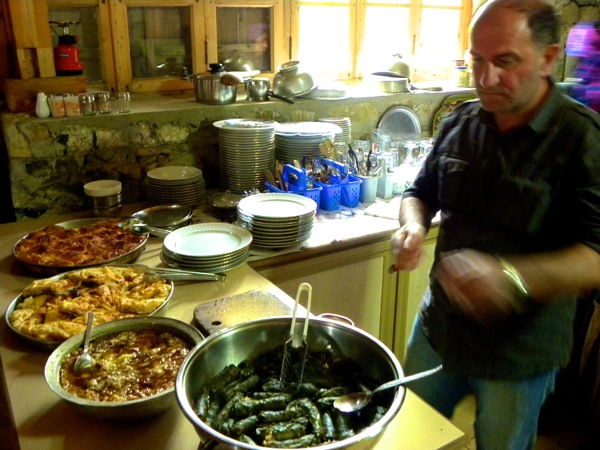After an hour long drive in a mini-bus and another—at times death-defying—hour crawling up a just-bulldozed road along the side of a mountain in an open-back 12-seater jeep, we reached our destination. And it was worth every yelp of fear on the way up.

What is a Yayla?
Eastern Turkey’s yaylas, villages used by nomadic herdsman in the summer, are truly like no other place I have visited in the world. And judging by the reactions of the other esteemed members of my group, which included three International Ecotourism Society board members, I can promise you I’m not the only one who thought so.
These historic settlements formed an intrinsic part of Turkey’s nomadic culture for hundreds of years. When the coast and the lower plains began to warm up in June, families moved their entire household, including livestock, up to their community’s corresponding yayla and spent the summer making cheese and yogurt for the year from milk flavoured by the alpine flowers and grasses in the yaylas.
Today, summer trips to the yayla are more about relaxation than cheese-making, as city dwellers flee to their family homes in the mountains to vacation away from the sweltering summer heat in Istanbul or Trabzon.
Today’s Yaylas
In yaylas like Pokut, pictured above, many residents practice traditional herding and cheese-making along with tourism, opening their homes to guests from other parts of Turkey and the world and offering them lovingly-prepared local culinary specialities along with a well-kept room in a traditional home.

Electric lines, sewage and water pipes, and cable television don’t make it to the yaylas because the infrastructure simply doesn’t extend to these hard-to-reach communities used only for three months each year. Water is sourced sustainably from natural mountain springs, homes are heated with hand-chopped wood and wooden stoves, and all waste is reutilized as fertiliser, because the lodges only produce organic waste.
In a yayla, you’re basically guaranteed an accommodation that is in harmony with its surroundings and built sustainably with local materials.
How to Visit a Yayla
You can reach Ayder, a yayla-turned-spa-resort town that makes an ideal entry point to the region, with relative ease by the Turkish minibus system.
In the yayla of Aydar, most of the residents have converted their family homes into pensions, but Aydar is a thoroughly-modern and highly-developed town, so it’s best to move up the mountain to the more authentic part of the yayla. The BUKLA ecolodge Oberj up the hill is your best bet for eco-accommodation and tranquility in an increasing crowded yayla:
The Oberj has maps of the area hiking routes and offers traditional local meals in its family-style dining room.
Getting There and Around
The yaylas at the top of Turkey’s Karcal mountains are difficult to access independently, due to a ban on accurate hiking maps stemming from boarder agreements with Georgia, but BUKLA tours, who also owns the lodge in Ayeder, offers week-long and customizable tours hiking along the mountain peaks from yayla to yayla. They can also arrange transport up the mountain for you if you’d like to stay in one yayla for a few days or weeks.
Dolmuşes, small buses more akin to large vans, follow relatively fixed routes that occasionally deviate to accommodate specially requests from elderly passengers, but offer independent travellers the best way to get to and from the accessible yaylas.
In the Rize province of Turkey, famous for its tea production, but home to many yaylas, have a local point you to the dolmuş stop and check the listed route table to find your way. Routes and timetables are not available online.

